Out of the seven species of sea turtles around the world, six are classified as threatened or endangered, according to the International Union for Conservation of Nature.
Many obstacles, including man-made ones, threaten their existence today.
Experts suggest only 1 in 1,000 hatchlings will survive to adulthood.
Common threats that sea turtles face:
- Entanglement in fishing gear
- Poaching and illegal trade of eggs, meat, and shells
- Coastal development
- Plastic and other marine debris
- Global warming
- Ocean pollution
1. Leatherbacks
Status: Vulnerable
Scientific Name: Dermochelys coriacea
Leatherback turtles are the largest of the sea turtles. They can reach lengths of over 6 feet and can weigh up to 2,000 pounds.
Leatherbacks can be found nesting on tropical beaches but can migrate as far north as Canada.
These turtles rely heavily on jellyfish for food. Unfortunately, it’s difficult for them to distinguish between ocean debris and jellyfish and will at times ingest foreign particles resulting in sickness or even starvation.
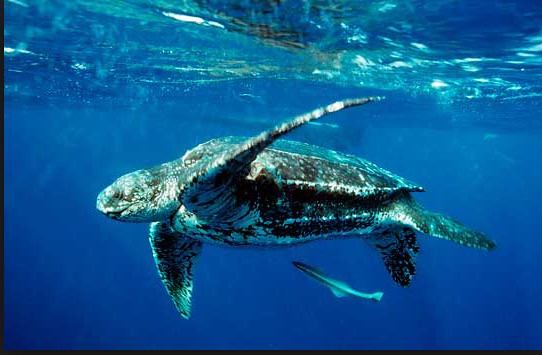
The leatherback sea turtle has a unique and beautiful shell consisting of a single piece of 5 ridges.
2. Green Turtles
Status: Endangered
Scientific Name: Chelonia mydas
The green sea turtle is another hefty turtle, weighing up to 350 pounds with a carapace measuring up to 3 feet long. They are not named after their carapace, however, which is usually olive or brown, but for their green skin.
They are found in tropical and sub-tropical water around the world. Green turtles are one of the only species known for leaving water other than for nesting purposes. They have been known to make their way toward land to sunbathe.
Unlike most other turtle species, adult green turtles are herbivorous. Baby green turtles do feed on crabs, jellyfish and sponges, however.
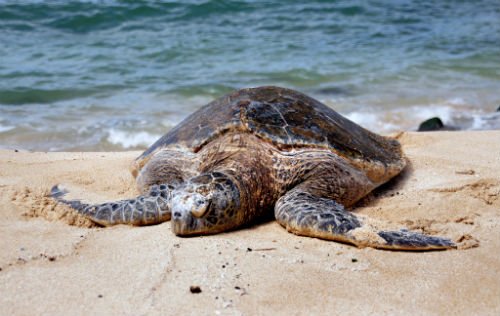
Greens are endangered throughout the world and a subpopulation in the Mediterranean is classified as critically endangered.
They are mostly killed for their meat and eggs. According to National Geographic, their numbers are reduced by oat propeller accidents, fishnet-caused drowning, and the destruction of their nesting grounds by human encroachment.
3. Loggerheads
Status: Endangered
Scientific Name: Caretta caretta
Loggerheads are reddish-brown and have large heads. They can grow to be 3-5 feet long and weigh up to 400 pounds.
Loggerheads roam vast areas of the ocean so critical nesting beaches are scattered across several countries. They are the most common turtle species to nest in Florida.
They feed on crabs, molluscs and jellyfish.
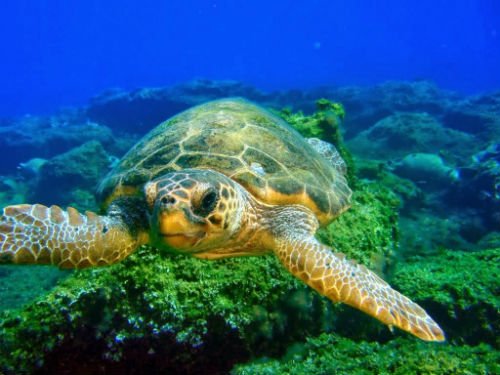
Loss of suitable nesting beaches and the introduction of exotic predators have taken a toll on the loggerhead population. Loggerheads have also been deeply affected by untended fishing gear and sometimes get trapped in fishing trawls.
4. Hawksbill
Status: Critically Endangered
Scientific Name: Eretmochelys imbricate
Hawksbills are named after the shape of their beak, which looks similar to the beak of a raptor.
They can grow to lengths of 3-5 feet long and weigh up to 180 pounds. They live in tropical waters and feed on sponges.
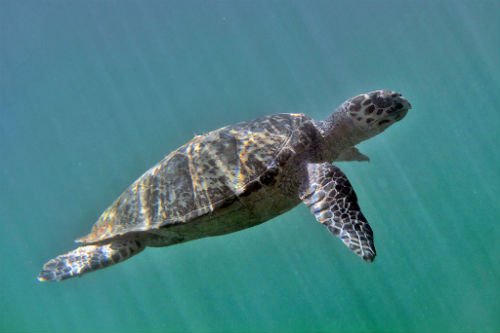
Hawksbills are critically endangered mostly due to human impact. Their unique tortoiseshell pattern makes them a prime target for hunters.
5. Olive Ridleys
Status: Vulnerable
Scientific Name: Lepidochelys olivacea
The Olive Ridley species is found in tropical regions around the world and is named after their olive-colored shell.
Weighing less than 100 pounds, they are much smaller than most other turtle species.
They like to feed on invertebrates such as crabs, jellyfish, and tunicates, although some eat mostly algae.
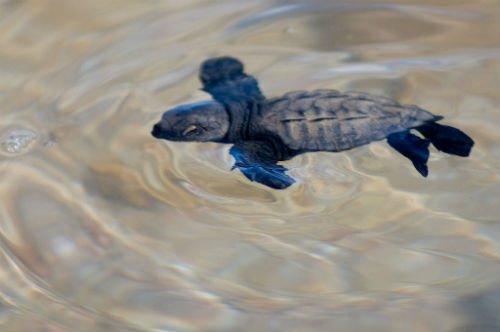
When nesting, females come to shore in colonies of up to a thousand turtles and have mass nesting aggregations on the coast of Central America and East India. Sometimes, the mothers lay their eggs too close to shore which results in the nests being wiped out.
Several projects are in place to help protect Olive Ridleys, including Osa Conservation, where there is an effort to relocate vulnerable nests to a nearby hatchery.
6. Kemp’s Ridleys
Status: Critically Endangered
Scientific Name: Lepidochelys kempii
The Kemp’s Ridley is the smallest sea turtle of the bunch, measuring up to 30 inches and weighing 80-100 pounds.
They are coastal turtles and found in temperate to sup-tropical waters in the western Atlantic and Gulf of Mexico.
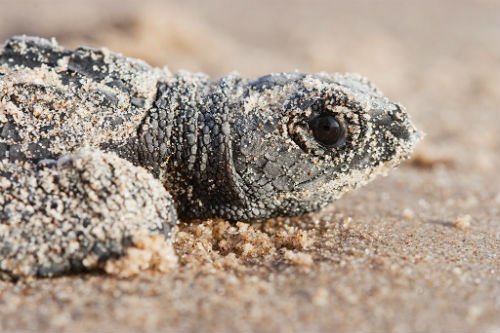
These turtles like to eat benthic organisms, such as crabs.
Hunting was once the biggest reason for their endangered status, but today major threats include habitat loss, pollution and entanglement in shrimping nets.
7. Flatbacks
Status: Data Deficient
Scientific Name: Natator depressus
Named for their flattened olive-gray carapace, they are only found in Australia and live in coastal waters.
Flatbacks feed on squid, sea cucumbers, soft corals and molluscs.
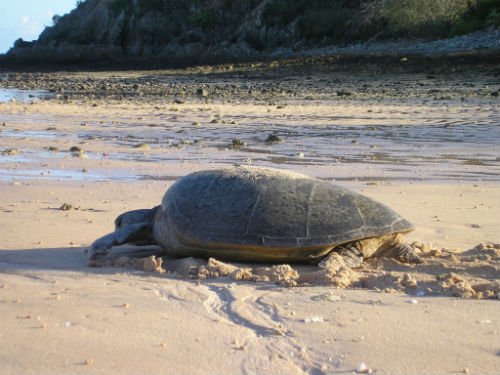
The lack of research into the Flatback population prevents us from knowing more about their abundance and distribution across Australia.
Photos: Spragg via Flickr Commons, Anastasios Sterpis via Flickr Commons, Kevin Bryan via Flickr Commons, Charles Chandler via Flickr Commons, Seth Patterson via Flickr Commons, Reef Catchments via Flickr Commons







